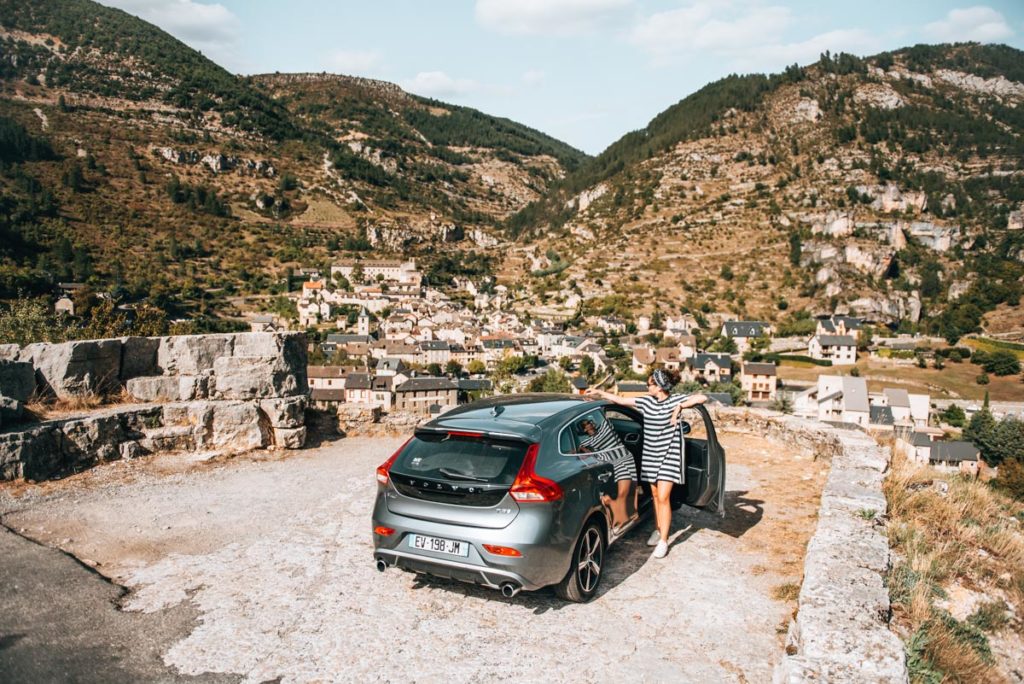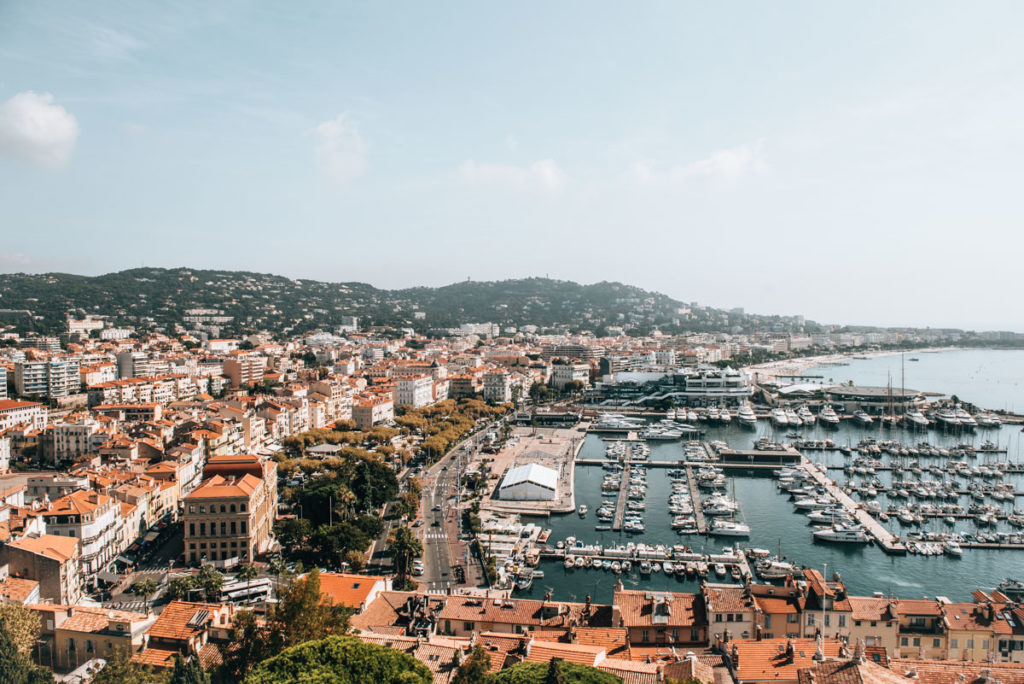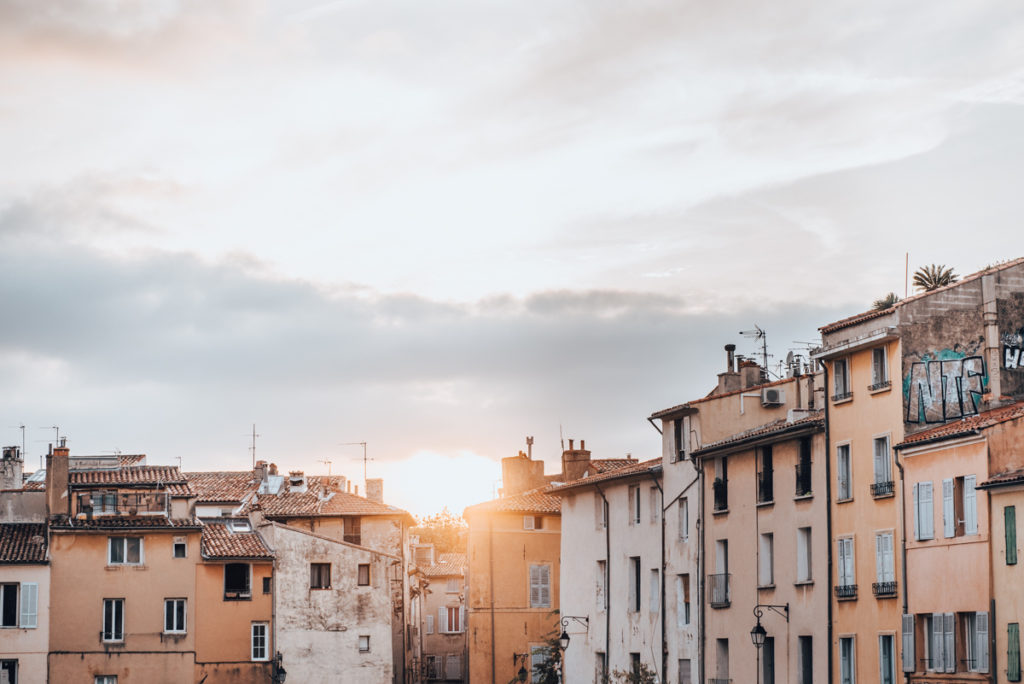The Provence – there has not been a word in recent years that has had the ability to trigger such wanderlust more than this. We have already lost count as to how long such a road trip through the villages of Provence has been on our wish list. Very, very long anyway. The reason behind it is, in fact, rather trivial. You know when you see photos of a place and you just feel like you absolutely have to go there? As if it was calling you? That’s how it was with us and Provence.
So much we can promise: Provence is one of the most beautiful places in the world. It’s amazing how much stereotypes become reality here. Lavender scent, Provencal farmer’s markets and picture-perfect streets lined with olive and cypress trees – we fell in love instantly with Provence, but that’s not exactly hard to do.
In this blog article, we’ll tell you the stops on our road trip through the most beautiful villages in Provence and our travel tips. Incidentally, when we talk about Provence, we mean first and foremost, the mountain ranges of the Luberon in the Vaucluse Département. Ready for an extra load of holiday feelings? Here we go!
Inhalt
1. Starting point of our Provence road trip: L’Isle-sur-la-Sorgue
An ideal starting point for a trip through Provence is the provincial town of L’Isle-sur-la-Sorgue. It bears the lovely nickname “Venice of Provence” and with good reason: The old town of L’Isle-sur-la-Sorgue resembles an island and is surrounded by a river, the Sorgue. A good dozen bridges – some of which are private – lead to the old town.
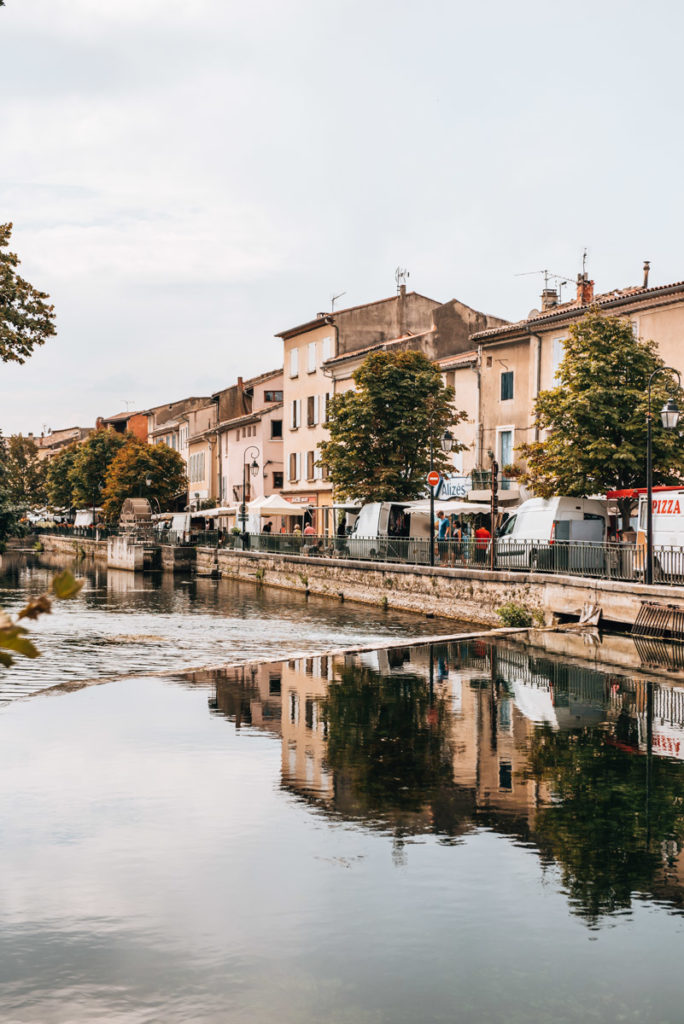
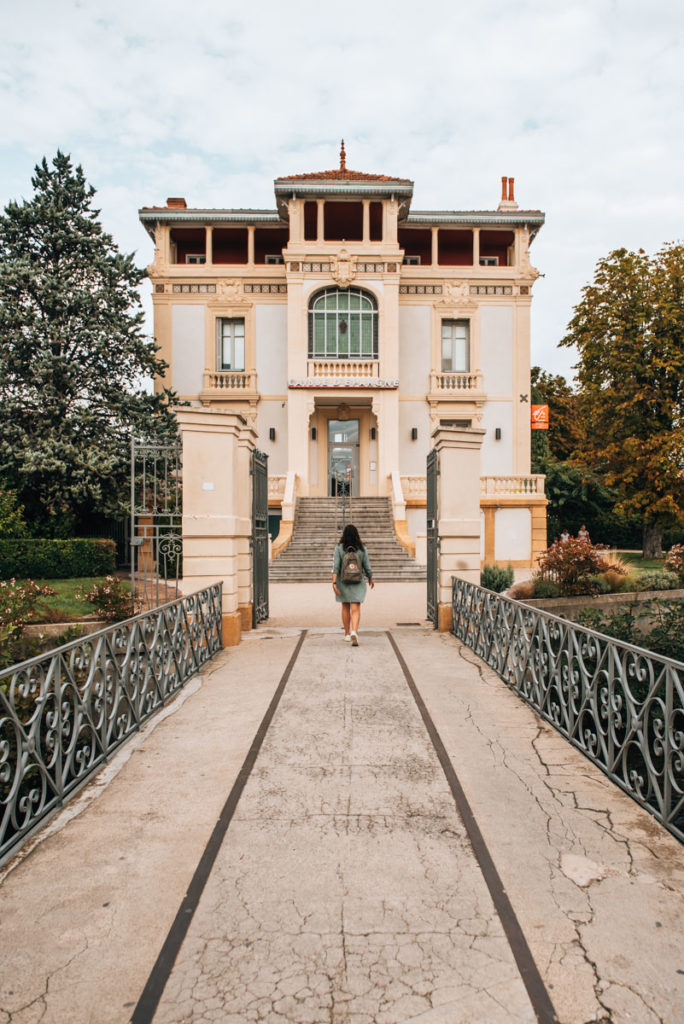
Markets in L’Isle-sur-la-Sorgue
If you walk through L’Isle-sur-la-Sorgue on a Sunday morning, you will quickly realise what the city is famous for. For a few hours, the entire Old Town resembles a single market bustle. Two markets are particularly frequented in L’Isle-sur-la-Sorgue: the weekly market and the antique market.
At the weekly market of L’Isle-sur-la-Sorgue you can buy Provençal delicacies, including vegetables, fruits, cheeses, olives and honey. This farmer’s market runs through the entire old town and along the river. Directly adjacent you will find the antique market. Twice a year (during Easter and in August), one of the country’s largest flea markets takes place in L’Isle-sur-la-Sorgue.
Information & opening hours of the markets in L’Isle-sur-la-Sorgue
Weekly market (Farmer’s Market) in the centre: Sunday from approx. 8am to approx. 1pm
Antique market along Avenue des 4 Otages: Sunday from 8am to 6pm
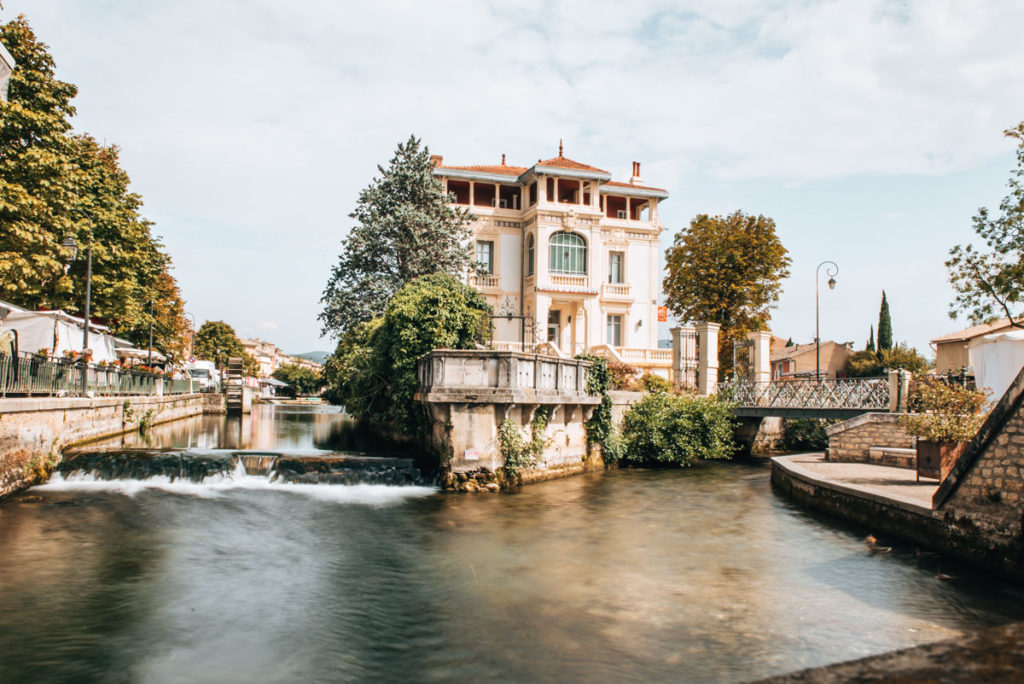
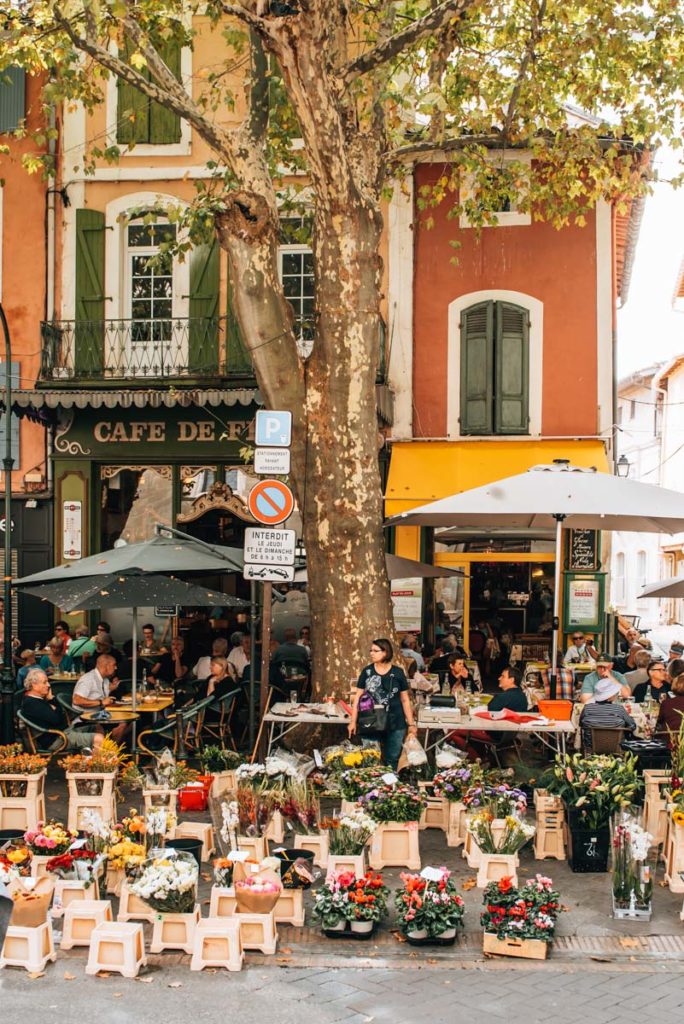
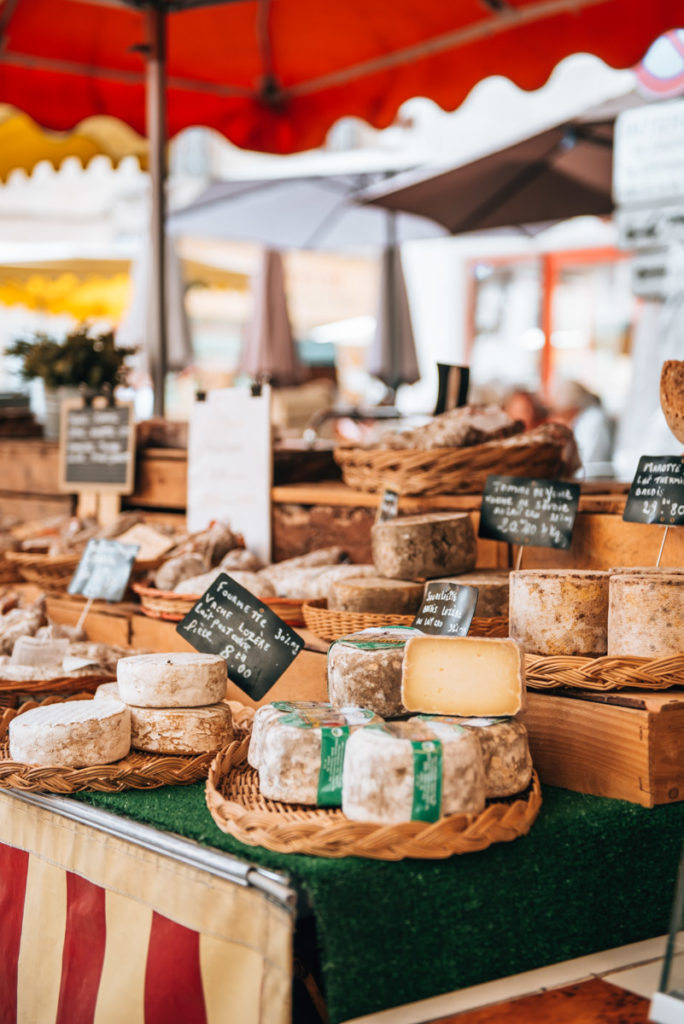
Fondation Villa Datris
Usually we are more likely to be found outside in the alleys of a city, but for the Fondation Villa Datris we made an exception. This beautiful, historic villa here houses a modern sculpture museum. Even the garden is decorated with sculptures. These very interesting themed-exhibitions change annually and are on display from May to November. Admission is free on top of that.
Address: 7 Avenue des 4 Otages, 84800 L’Isle-sur-la-Sorgue
Admission: free
Opening times can be found on the website: Villa Datris
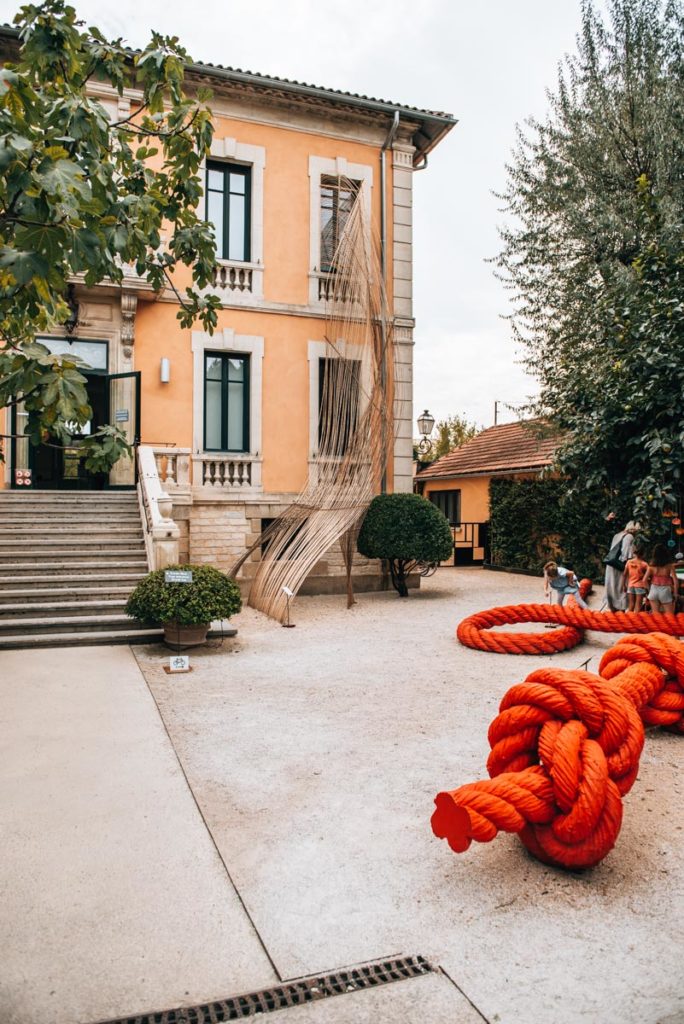
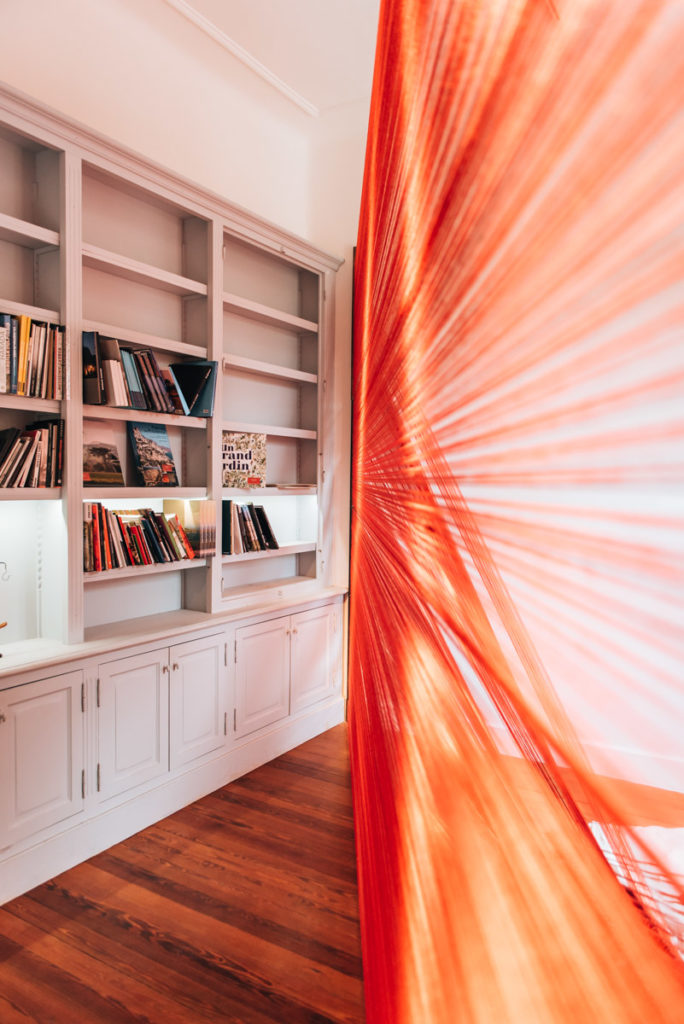
Pâtisserie “Jouvaud”
From Éclair to Tarte au citron: we fell for French pastries hard. Especially if it tasted as good as those in the “Jouvaud” pâtisserie, then we simply cannot resist. Best of all, in this cozy shop, there are not only culinary delights, but they also sell home and living ornaments and artefacts, which we think is an excellent idea.
Address: 5 Avenue des 4 Otages, 84800 L’Isle-sur-la-Sorgue
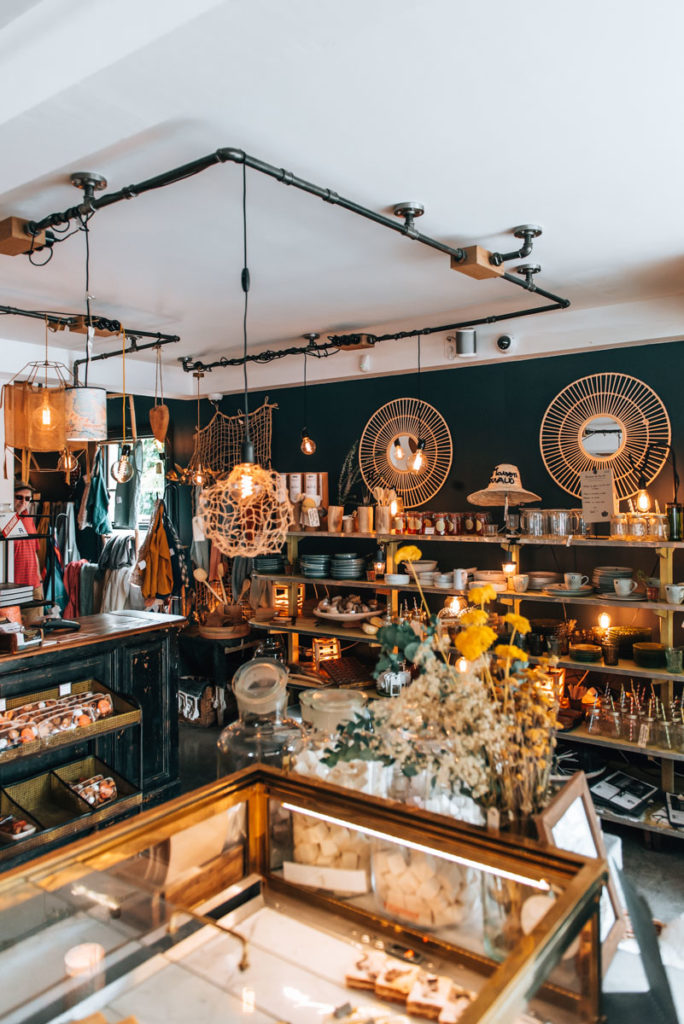
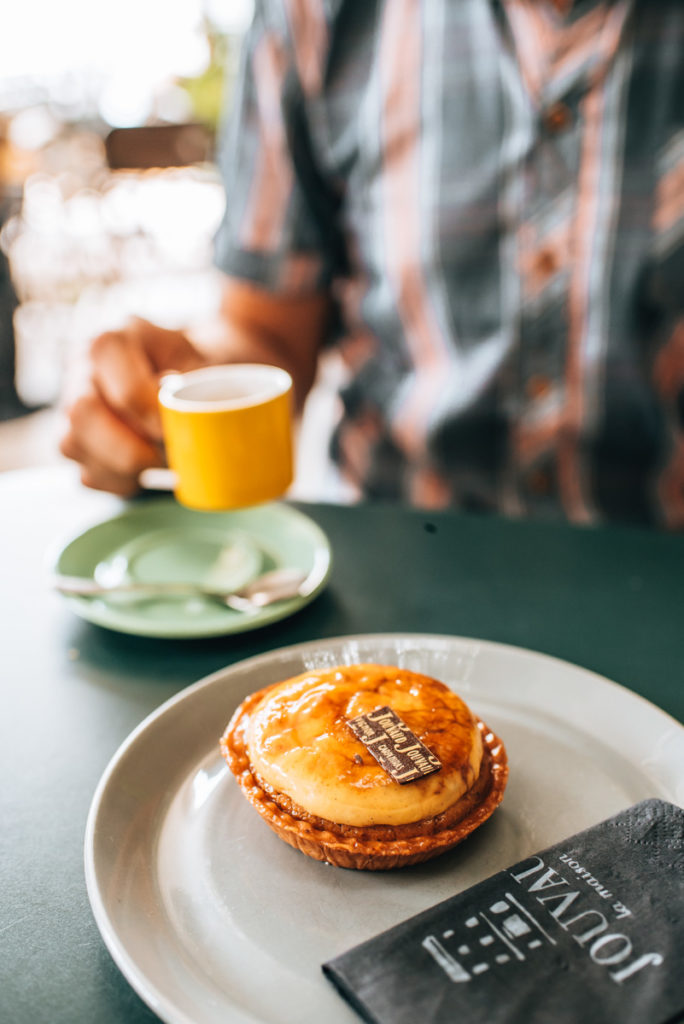
Dinner in the restaurant “L’Atelier du Jardin”
We had a very good dinner in the “L’Atelier du Jardin”. The L’Atelier belongs to the very fine restaurant “Le Jardin du Quai”, but is much more casual and more like a bistro. Both restaurants are housed in a beautiful garden. In good weather you can also sit outside.
The menu at “L’Atelier du Jardin” is pretty straightforward, but there is something for everyone and if necessary, they also take special requests. Our vegetarian dish – a vegetable quiche that you see in the photo – was excellent. The restaurant prices are just within the budget frame with main courses costing around 16 to 18 Euros.
Address: 91 Avenue Julien Guigue, 84800 L’Isle-sur-la-Sorgue
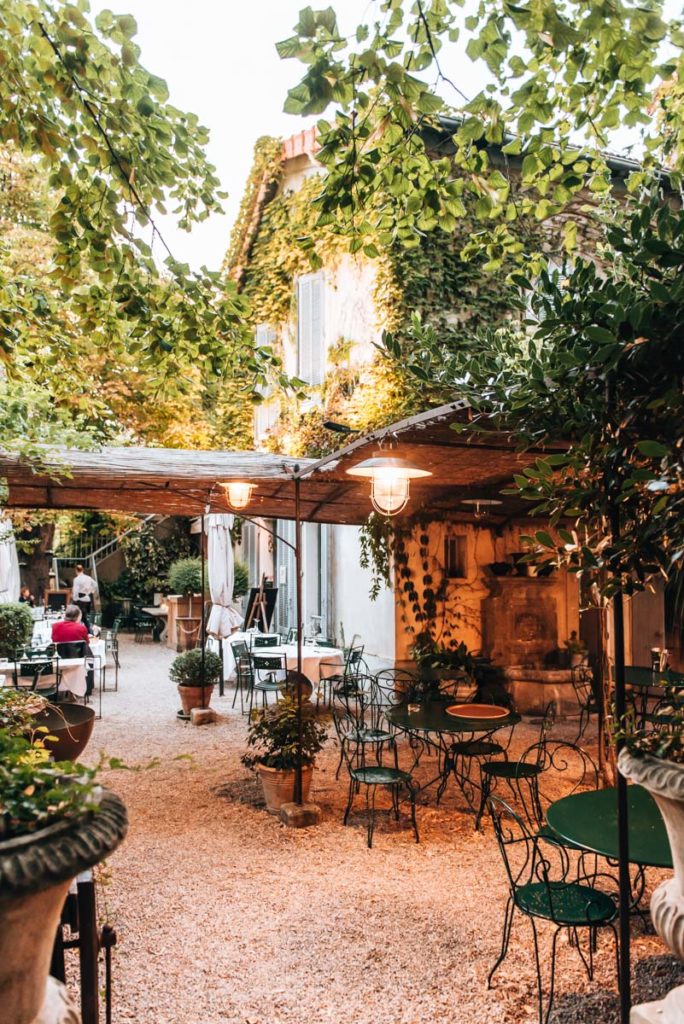
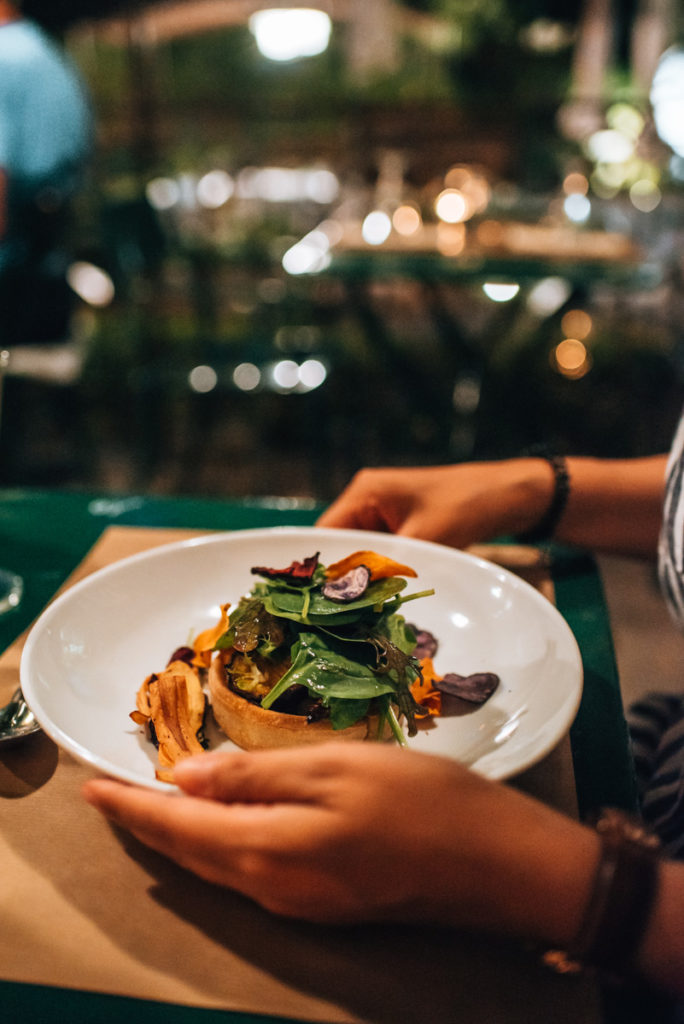
La Fontaine de Vaucluse
Probably the most popular destination around L’Isle-sur-la-Sorgue is the village of Fontaine-de-Vaucluse. There you will find the famous Quelle or Spring source of the Sorgue and you can see it for yourself. This is actually the largest of its kind in the entire country. Therefore, you can already imagine what that means: a quiet, secluded scene as the photo might suggest, is certainly not the case.
To get to the actual springs, you first have to walk about 15 minutes along the Sorgue. The nature is truly spectacular here, but the leisurely walk is more like a gauntlet of souvenir stalls and other visitors. We also have to mention, however, that we were there on a Sunday, thus the place was bound to be full.
Important to know: Depending on the season, you will get a different experience. In the spring after the snow melts, the water level is very high and the river just rushes by. The later you come in the summer, the sooner the water level drops and the less exciting it becomes. During our visit, for example, the water level retreated very far into the caves.
Information about visiting the Fontaine de Vaucluse
How to arrive: about 15 minutes from L’Isle-sur-la-Sorge by car
Admission: Free
Parking: 4 euros
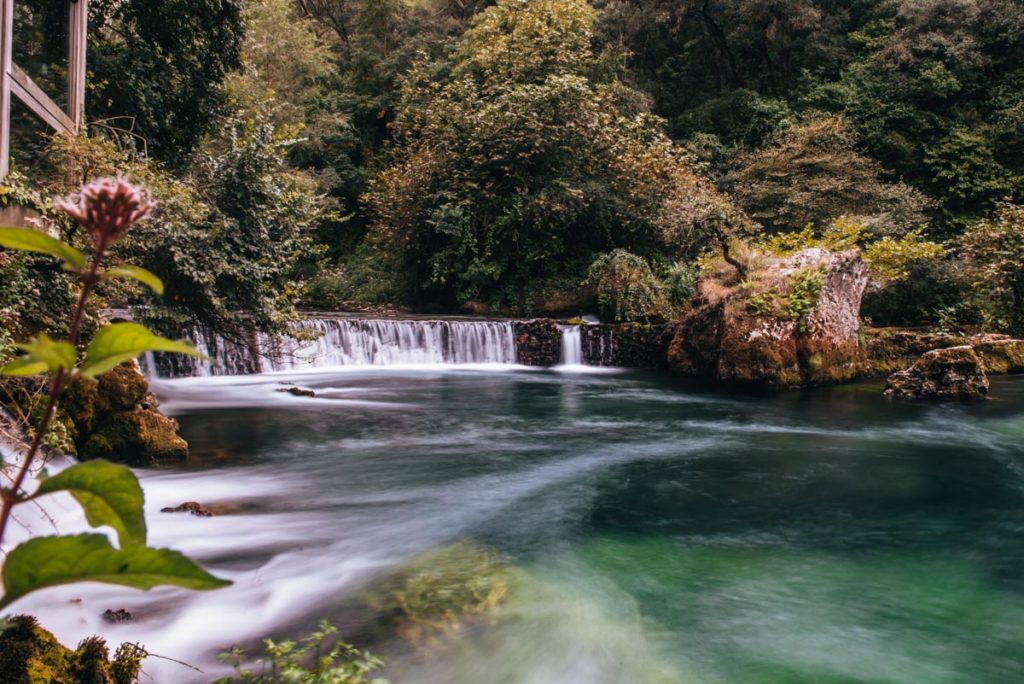
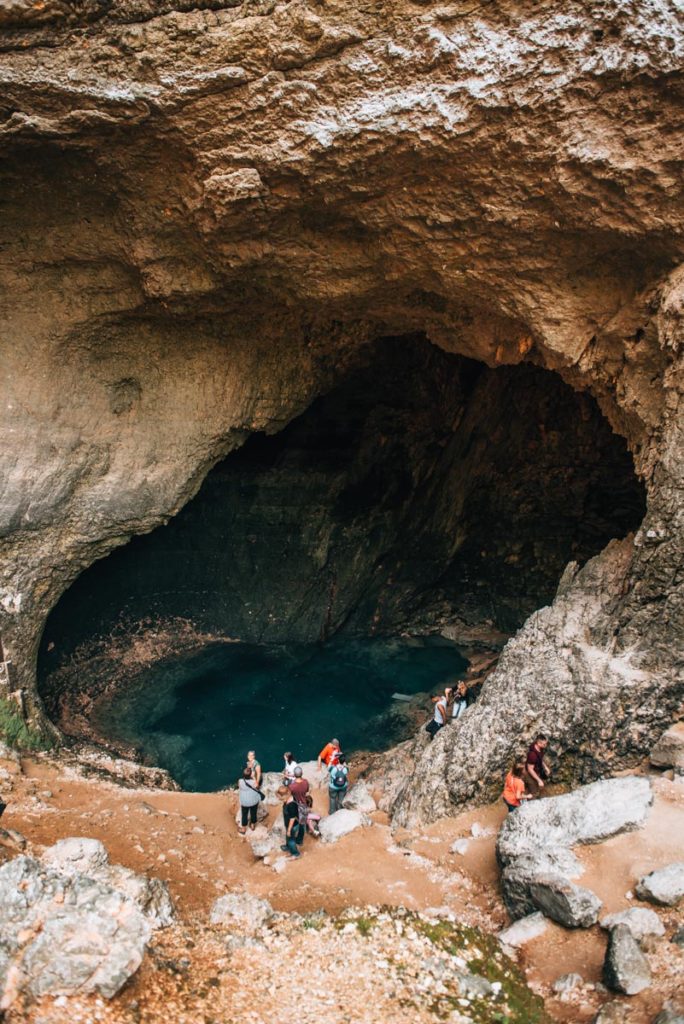
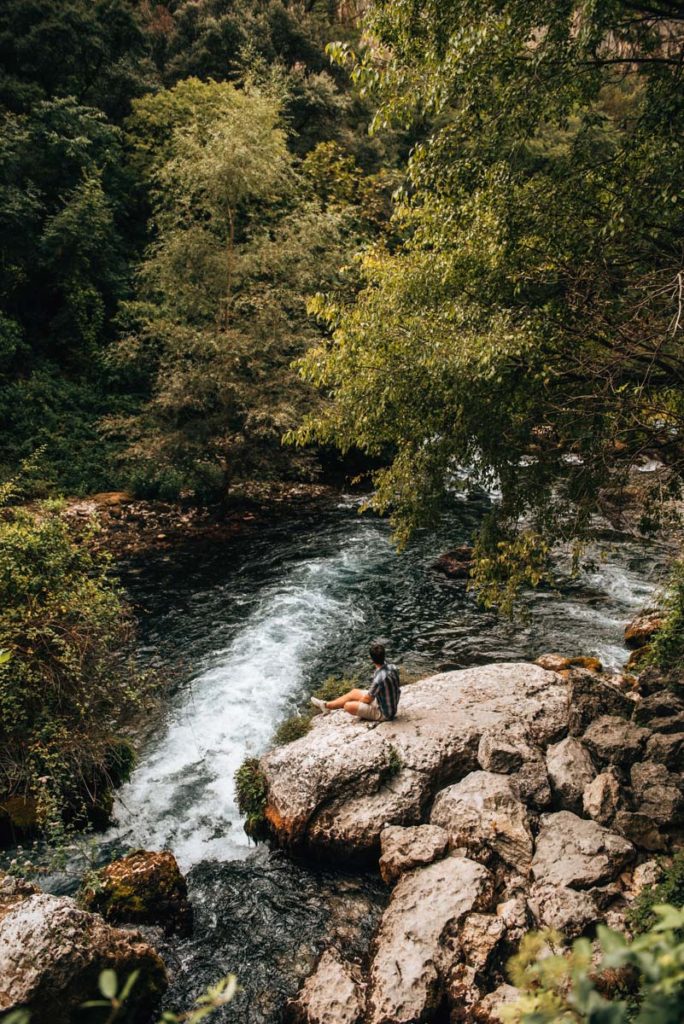
Our accommodation in L’Isle-sur-la-Sorgue
We spent the first night of our Provence road trip in L’Isle-sur-la-Sorgue – more precisely in a beautiful lodge on the La Sorguette Campsite. The campsite has been around for a while, but the lodges were built in 2018.
One thing that really stood out to us (aside from the awesome outdoor hot tub) was the smell of wood. Every time we entered the lodge, we immediately felt at home. Although you are here on a campsite, you live very comfortably in the lodge you have everything you need. The only downside is that the campsite is about 5 minutes drive from L’Isle-sur-la-Sorgue and so you do rely on a car. But that was not an issue for us.
Oh, and by the way: Of course, we had to test their Nordic outdoor bath. Naturally, with a glass of wine in hand, which we bought for just 6 Euros at the campsite reception. Super!
You can find more information & prices here: Natura Lodge at the campsite La Sorguette
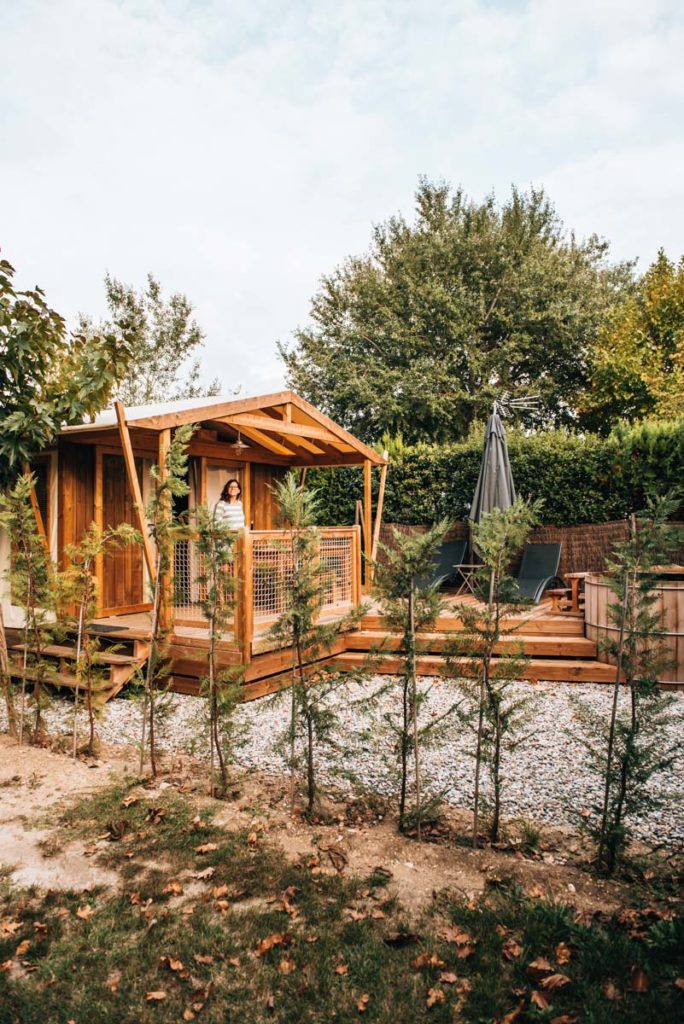
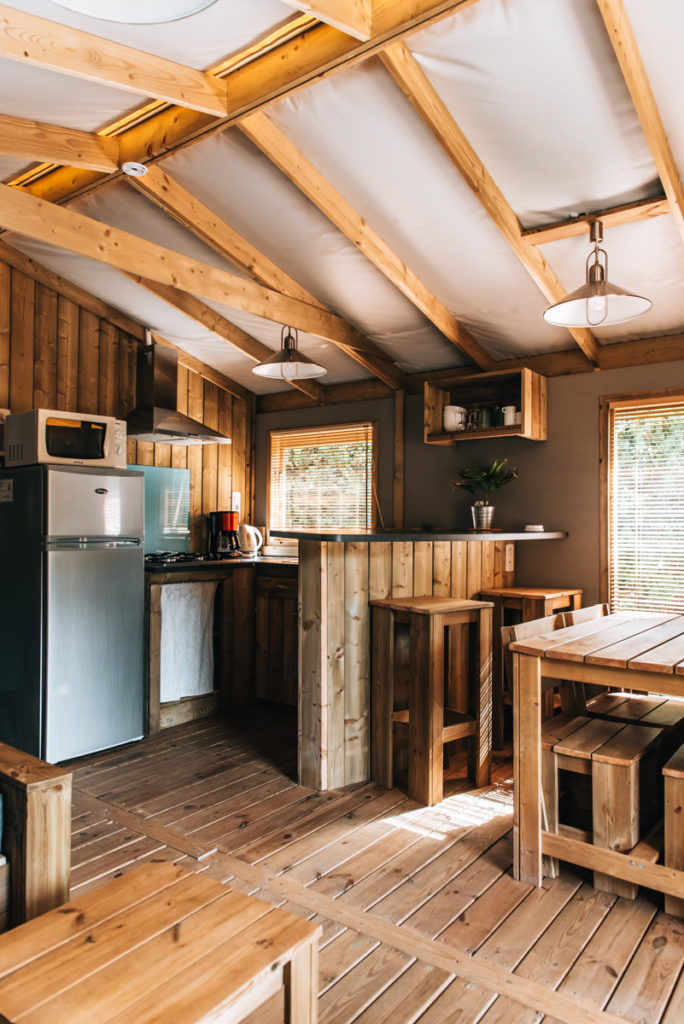
2. Road Trip Through Provence: The Most Beautiful Villages of Luberon in the Département of Vaucluse
And now to what this blog article should actually be about: our road trip through the picturesque mountain villages of Provence in Luberon. The Luberon is a mountain range in the south of the Vaucluse Département and comes pretty close to what we expected of “Provence”. Meaning: vineyards and olive groves as far as the eye can see, tiny mountain villages with charming stone houses and last but not least: lavender fields. The most commonly asked question we get here is – “When do the lavenders bloom?” – we have answered this for you further in our article.
By the way, the superlative (“the most beautiful villages”) is not an invention on our part, because there exists an official classification with this title – in French it’s called “Les plus beaux villages de France”. Some of the villages in the Luberon carry this honour.
Gordes
Our first stop is the village of Gordes. Particularly impressive is its location: Gordes sits enthroned on a rocky cliff face. No wonder Gordes is such a popular photo opportunity in France and whose silhouette can be found in many guidebooks and pamphlets. In high season Gordes is pretty crowded and very touristy. The most beautiful thing about Gordes is its beautiful panoramic view from a distance. You have a great view of Gordes right at the entrance to the village. Follow the roads D2 and then D15 coming from L’Isle-sur-la-Sorgue.
Of course, a walk through the streets of the old town is also worthwhile. The main attraction in the village centre is the castle complex called Château de Gordes. A tourist magnet outside the centre is the Cistercian Monastery called Notre-Dame de Sénanque. During lavender season it is probably the most visited destination in the region, because the lavender fields in front of the photogenic monument make it an absolute classic.
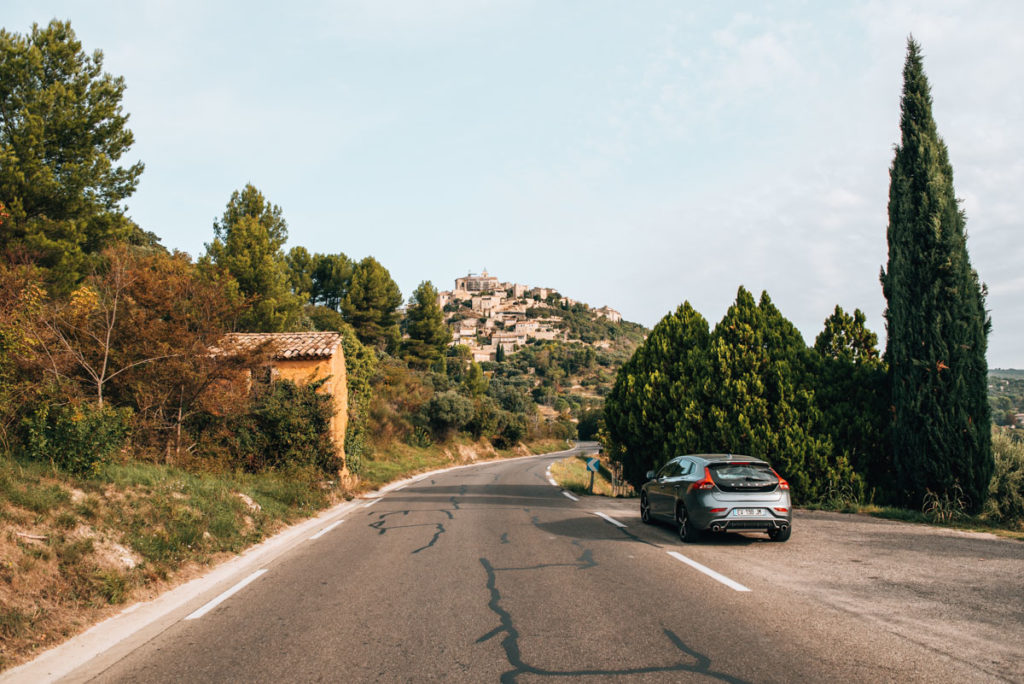
Roussillon
Roussillon dances out of line: the village is known for its reddish ocher rocks around which it is built. For this sight alone, a stopover is definitely worthwhile. We ourselves “only” saw Roussillon from afar when we were traveling by coach (more on that later).
Depending on the time of day and the position of the sun, the ocher rocks glow in a variety of shades of red and orange. Along the popular “Sentier des Ocres” you can hike directly through the ocher landscape. However, in the high season, be prepared for a fair crowd of visitors. A little less frequented (and outside of Roussillon) is a second route, the “Colorado Provençal”.
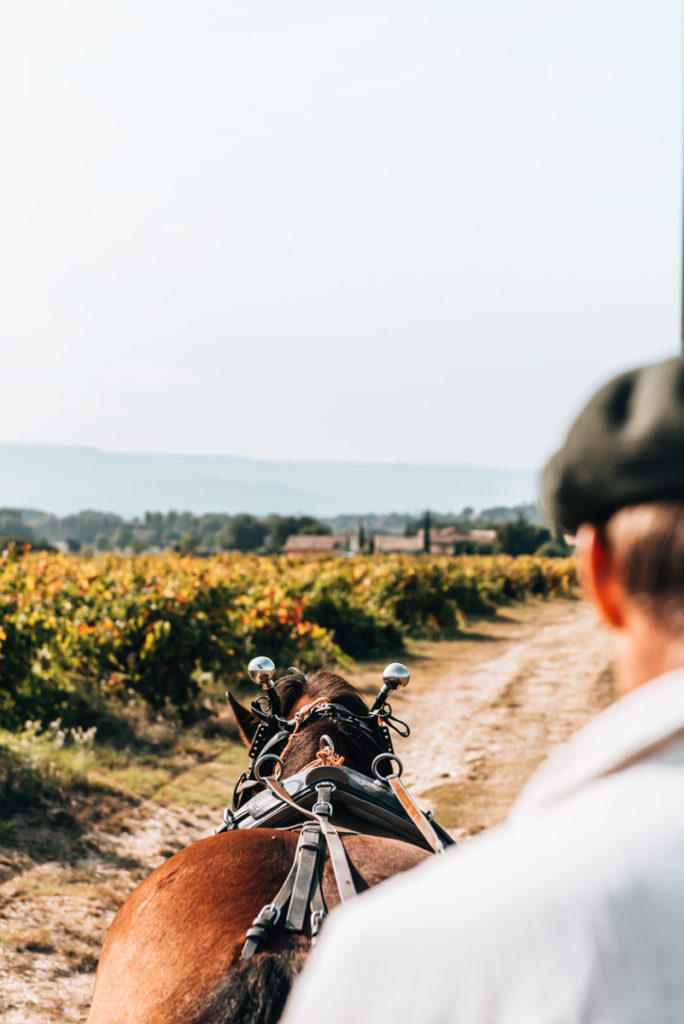
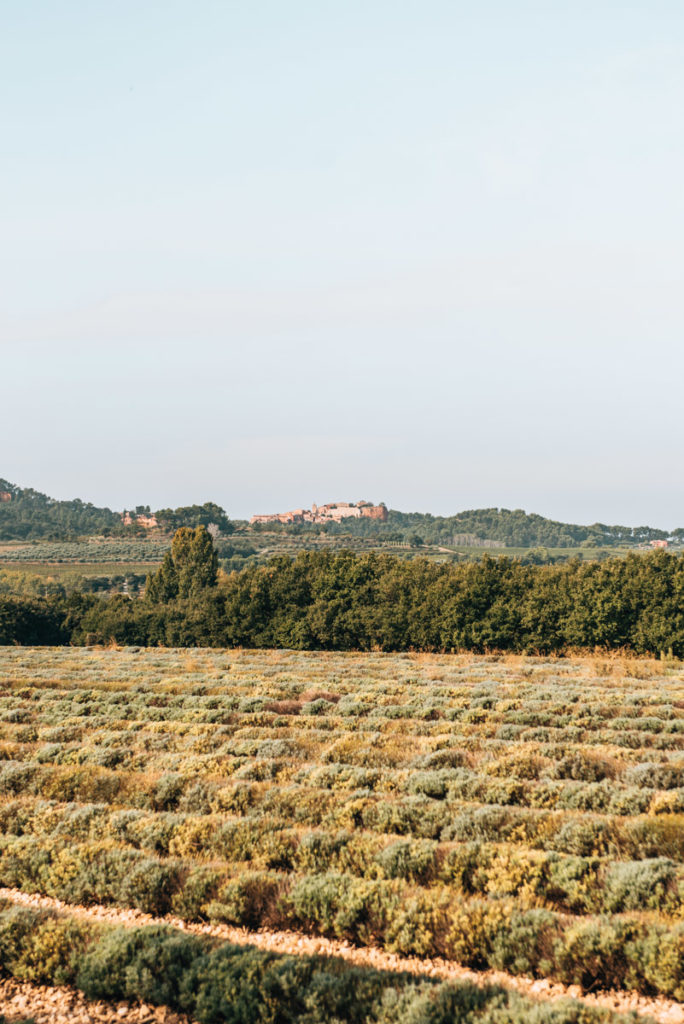
Saint-Saturnin-lès-Apt
We continue on to the region where we experienced some of the most memorable moments of our Provence trip – and with good reason. Or rather for two reasons: Ollivier & Coquet. The friendly farmer Ollivier took us on a carriage ride with his horse Coquet. Although it’s hard to put into words what made this experience so special, we will attempt to do our best.
Carriage ride through the Provence
Let’s start from the very beginning: Ollivier is – just like us – a world traveller. Before he returned to his home region of Provence, he had circumnavigated the world with a tandem partner. 3 years, 3 months & 3 days was the length of his unusual expedition. “We left in this direction” and pointed one way “and returned from the other direction”. He was not in tandem the whole time, but also on the lookout, amongst other things, for wild horses to research their behaviour.
Speaking of horses: horses have accompanied Ollivier since childhood. He has been riding since he was just a little boy. So when he returned from his trip around the world to organic farming, he came up with the idea of bringing visitors closer to the beauty of Provence with the help of horses. With that, the Provence Hipposervices was born.
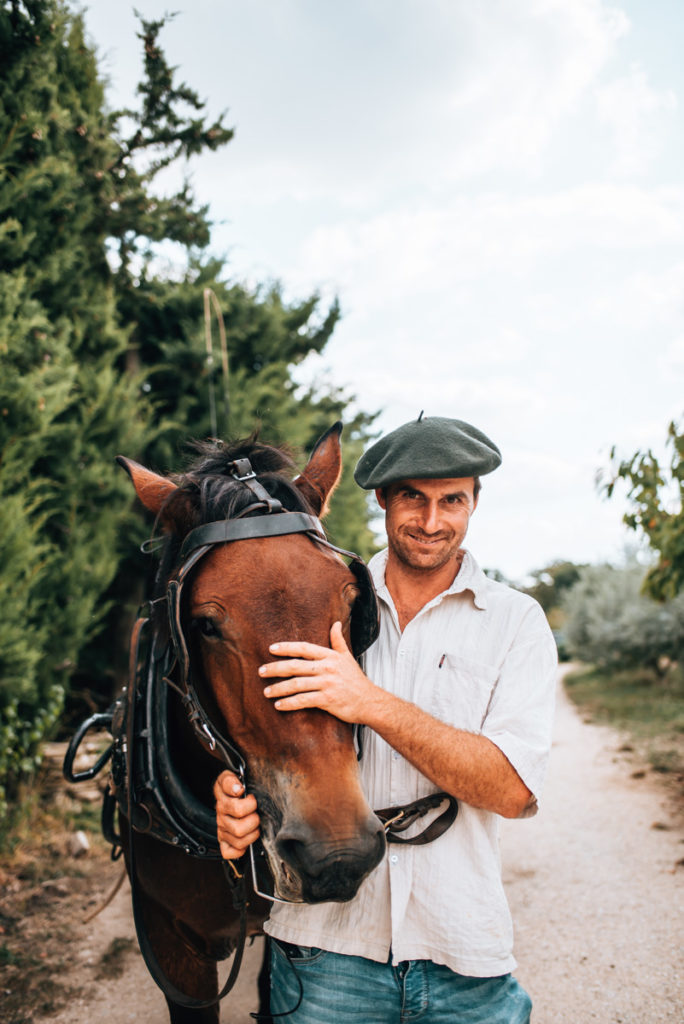

Today, Ollivier and his girlfriend are offering carriage rides through the unknown lands of Provence around Saint Saturnin les Apt. The close bond between him and his horses is apparent. If something frightened the horse while en route, then a break was taken until he calmed down. If the flies disturbed him too much, we went faster so as to avoid them. We’ve rarely seen anyone like Ollivier with such a close connection to his horse. On top of that, the ride was such a natural experience that we are so glad we got to do this.
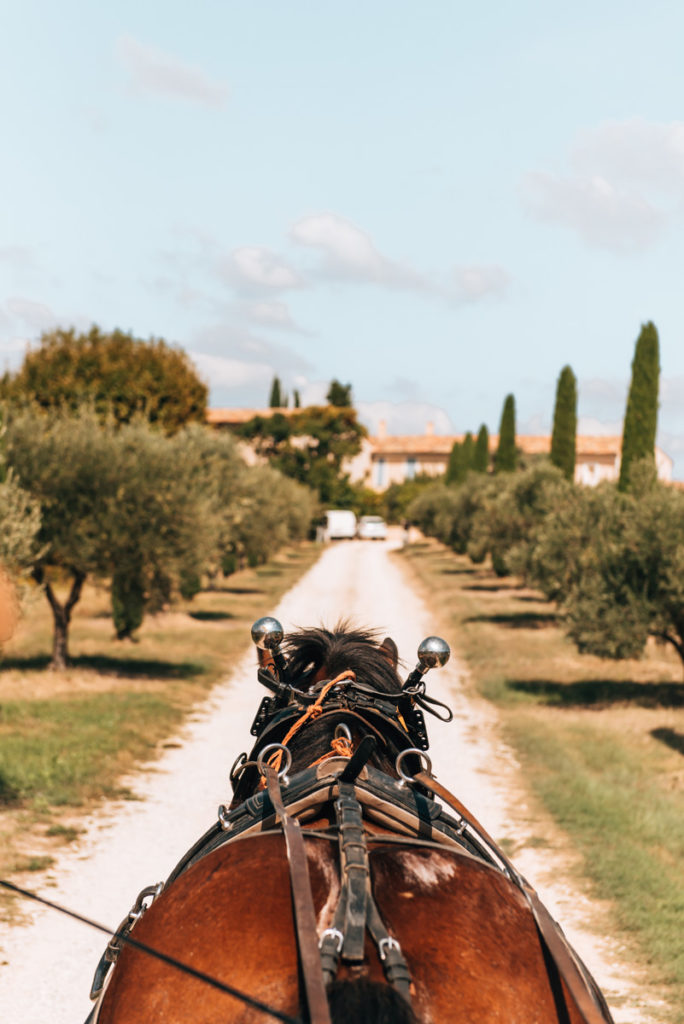
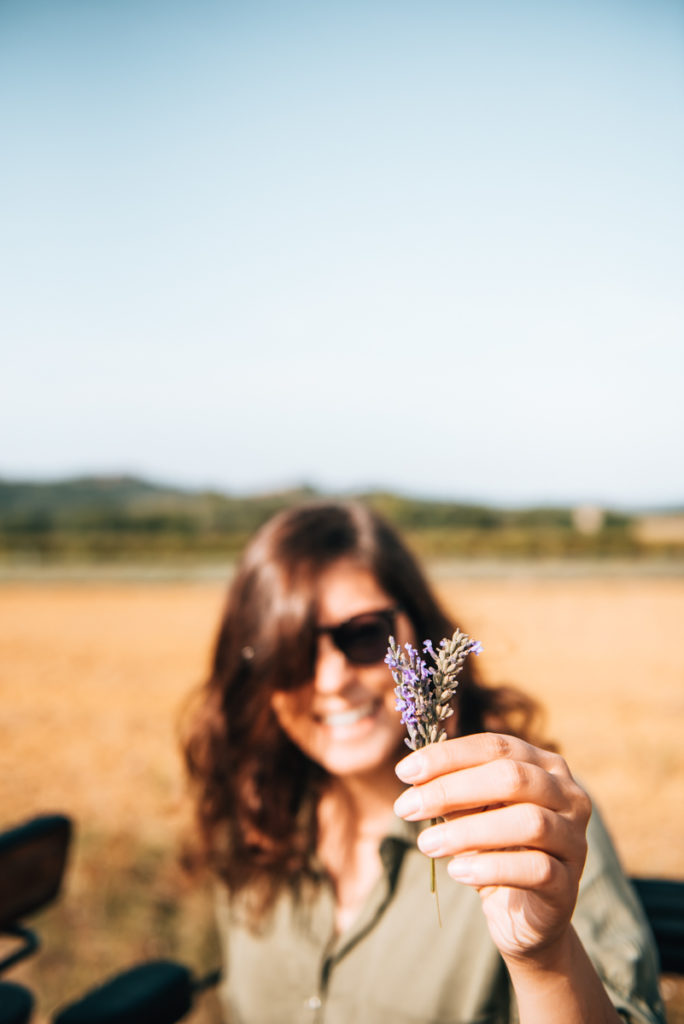
Mines de Bruoux
A worthwhile stopover on our carriage ride were the Mines de Bruoux near the village of Gargas. As part of a guided tour of the underground ocher tunnel you will learn how ocher was mined in earlier times. The tour takes about an hour.
Booking in advance is certainly not a bad idea, because then you can also request for the (rather rare) German or English speaking guides, as the tour usually takes place in French. Tip: Be sure to bring a warm sweater with you. In the dark corridors it can get as cold as 10 degrees! Taking photos is not allowed inside but they kindly made an exception for us so that we could show you a picture.
Price: 9,50 Euro
Address: 1434 Route de Croagnes, 84400 Gargas
Hours & Reservations on the official website: Mines de Bruoux
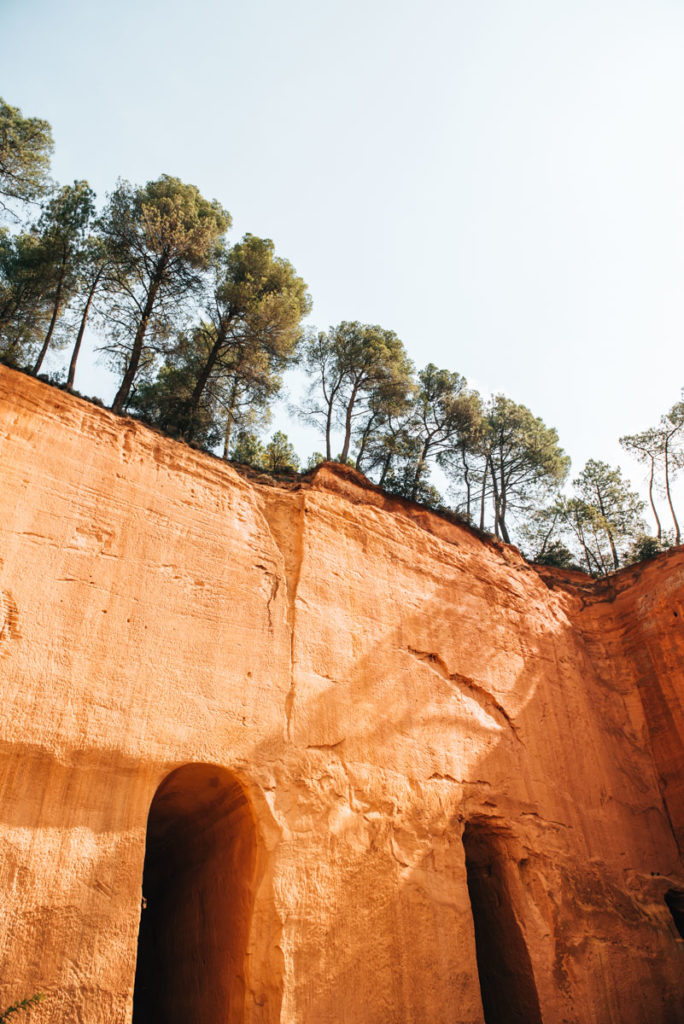
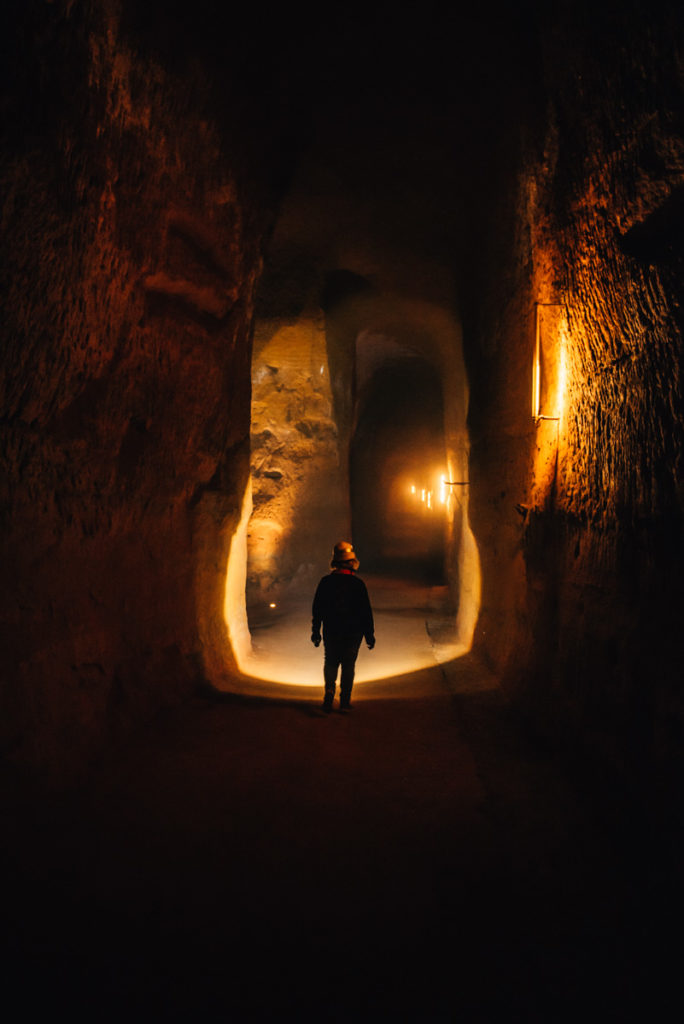
Lunch at a winery
The lunch break was spent at a wine tasting at the picturesque Château Perreal winery. Do you see this beautifully laid table? Chef Nadège Mestre had created the greatest vegetarian & organic lunch of our entire trip here in France.
The good news: Wine tastings are possible at Château Perreal at any time (and we highly recommend such). The bad news: This stopover together with the delicious lunch was organised as an “extra” for us. For a wine tasting in the Château Perreal, you can visit between Monday to Saturday from 10am to 12pm and from 2pm to 7pm. By the way: You can also stay overnight in this place! You can find all the information on the official website: Château Perreal.
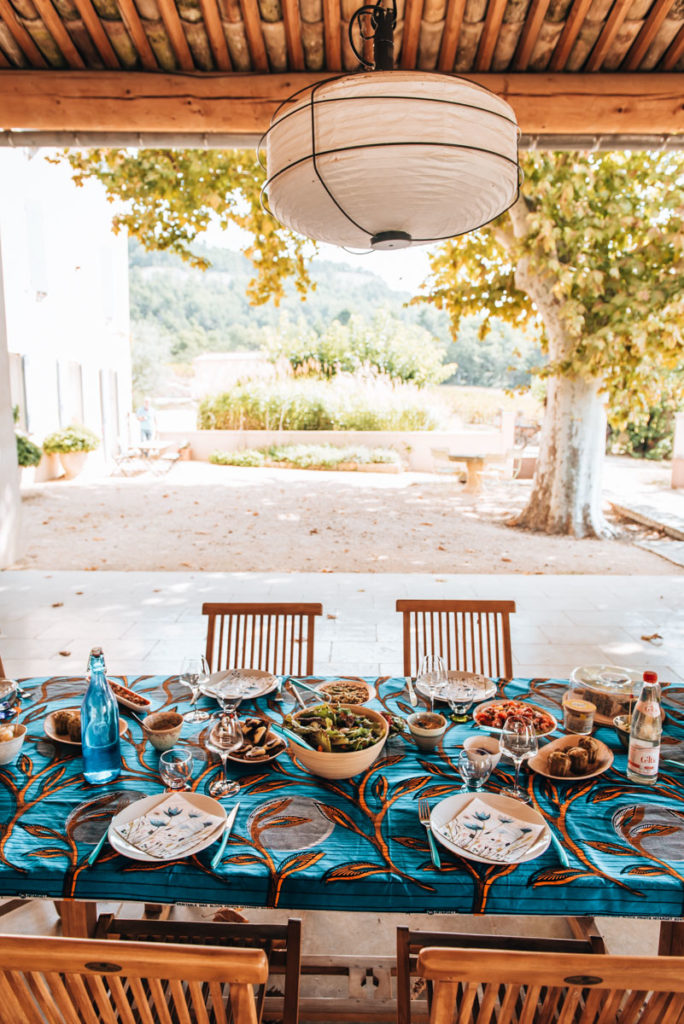
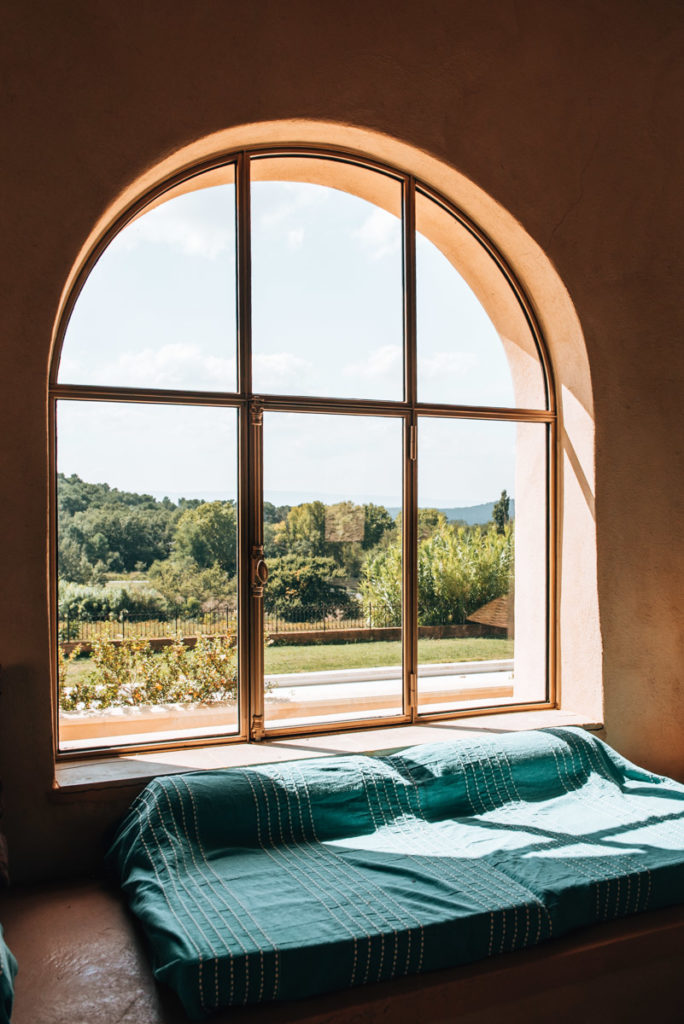
Information on the carriage ride at a glance
Duration: between 2 hours and one day depending on the chosen trip
Address: Domaine de seoule, 84490 Saint-Saturnin-lès-Apt, France (Attention: located outside of Saint-Saturnin-lès-Apt!)
Website: www.provencehipposervices.com
Saignon
From Saint-Saturnin-lès-Apt we continued south to the beautiful village of Saignon. With the medieval fortress Saignon is stunning to photograph from a distance. However, we strongly recommend that you also explore the village itself, because there is a fantastic view point here called the Rocher de Bellevue.
You can reach it after a short (approx. 10-minute) ascent from the village centre. And best of all, the tourist crowds that we were so used to seeing had all but vanished here in Saignon. Most of the time we actually had the view point all to ourselves.
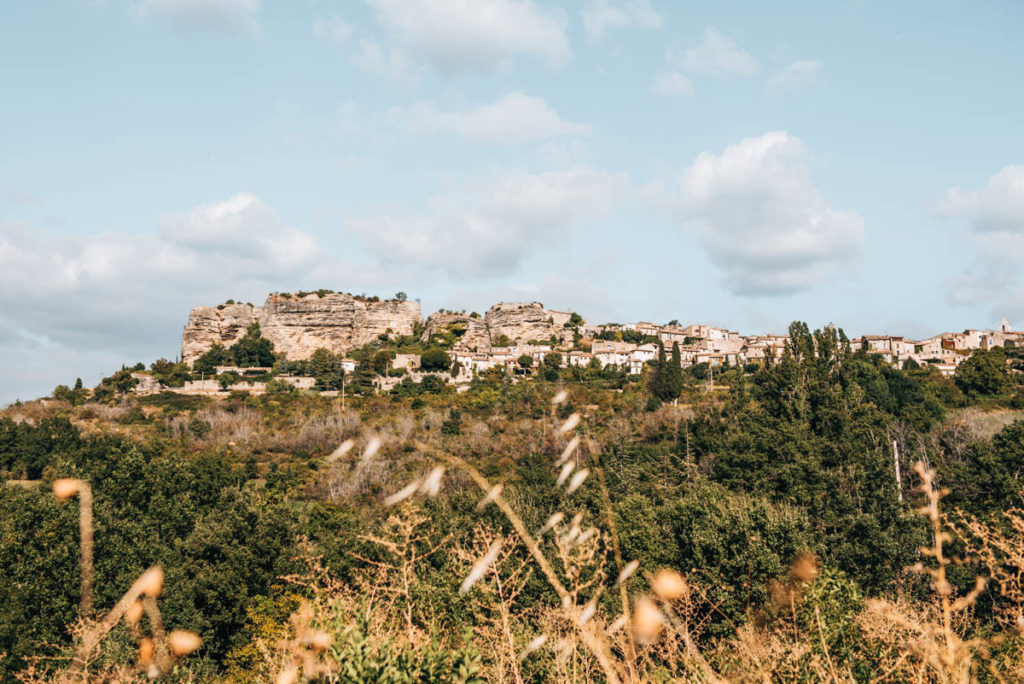
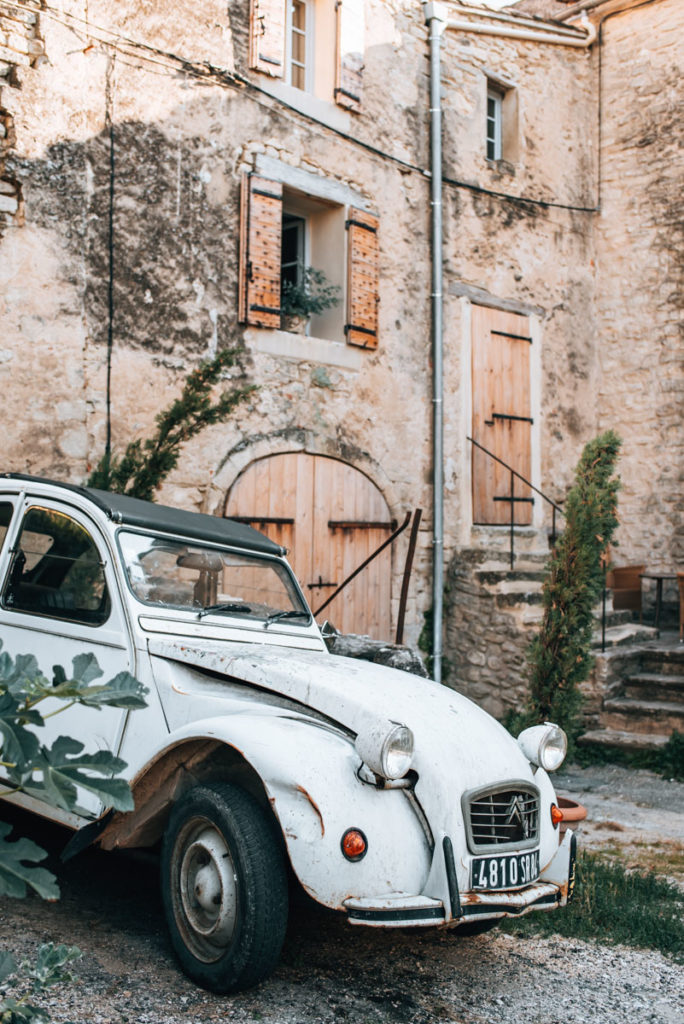

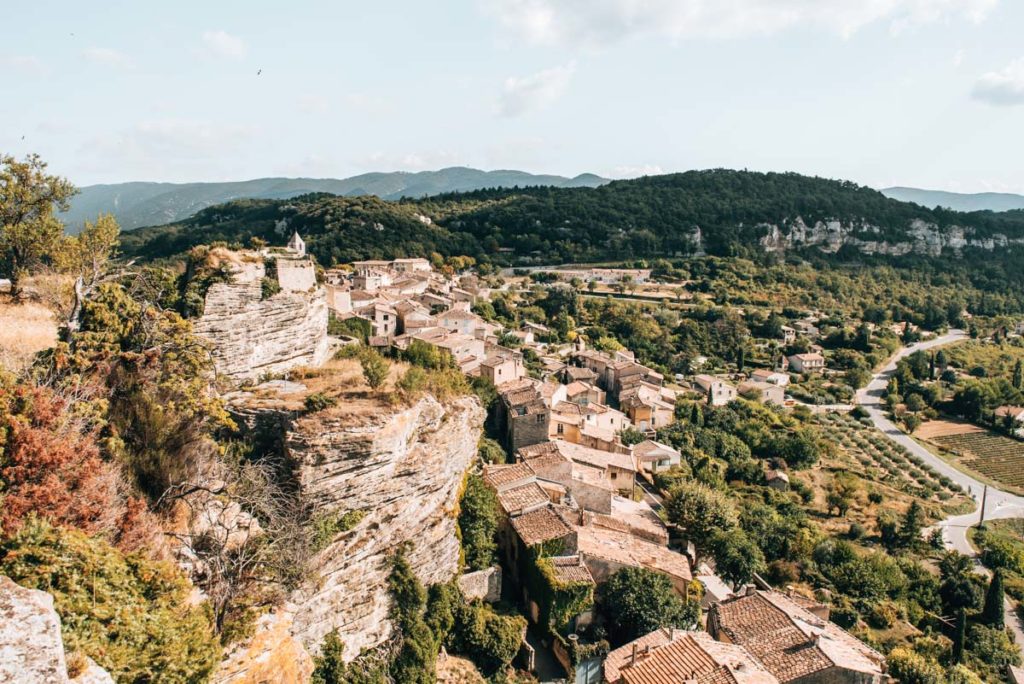
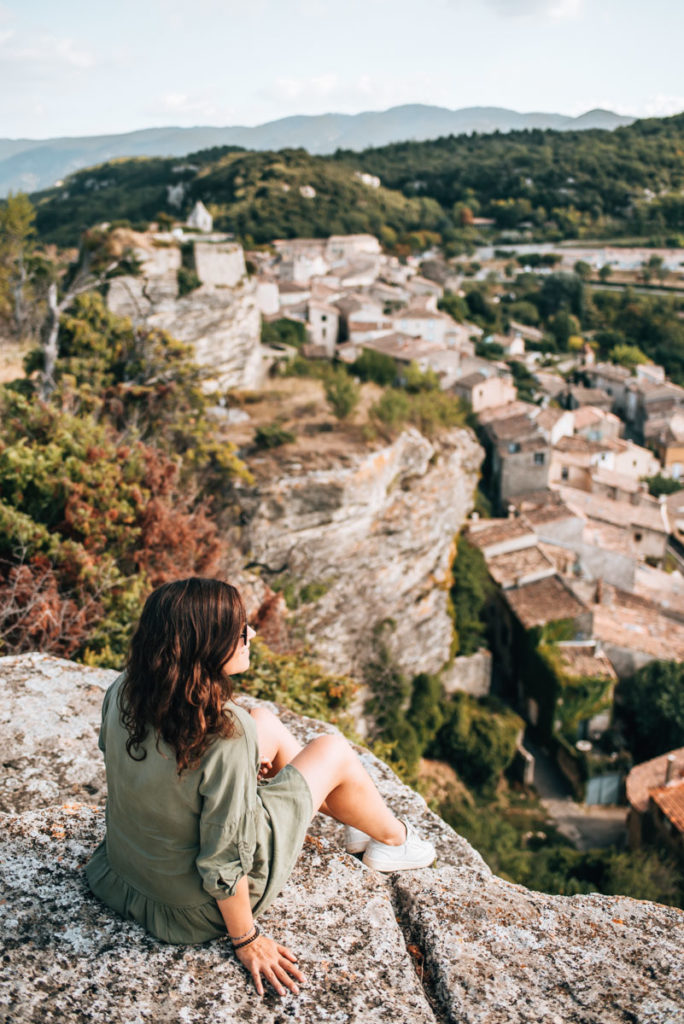
Bonnieux
We continued via Buoux to the picturesque Bonnieux. It is located on a plateau of the Luberon and is definitely worth a visit. Although Bonnieux is very popular, there was much less happening along the streets than we’d expected.
Highly recommended is the short walk up to the church (“Église haute”) at the top of the hill. Through the treetops on the way up, you have a magnificent view over the plain of northern Luberon to Mont Ventoux.
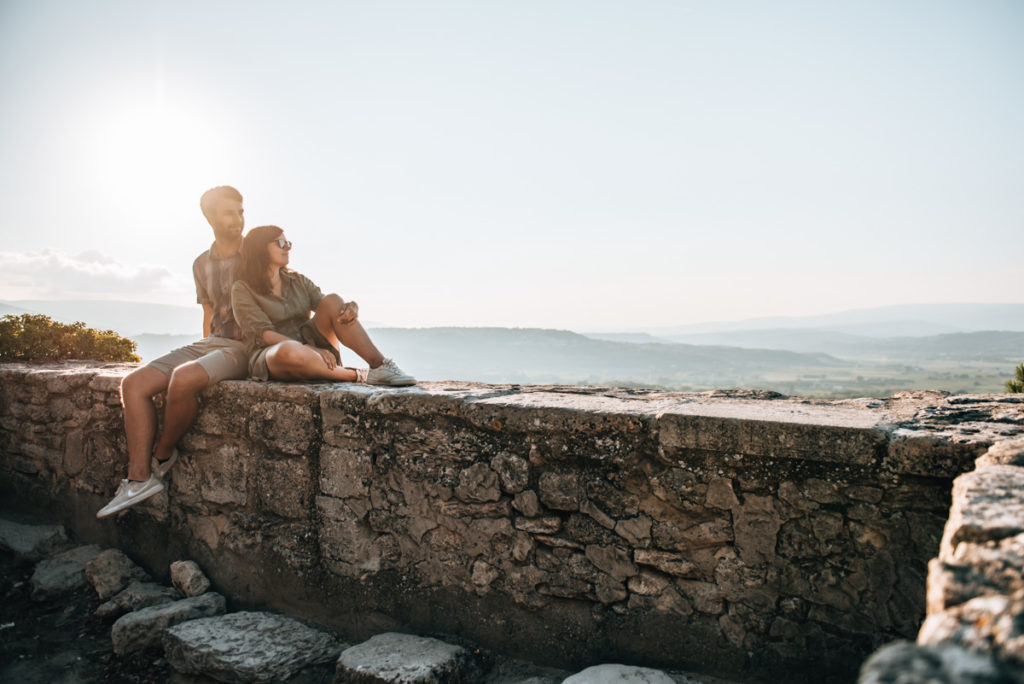

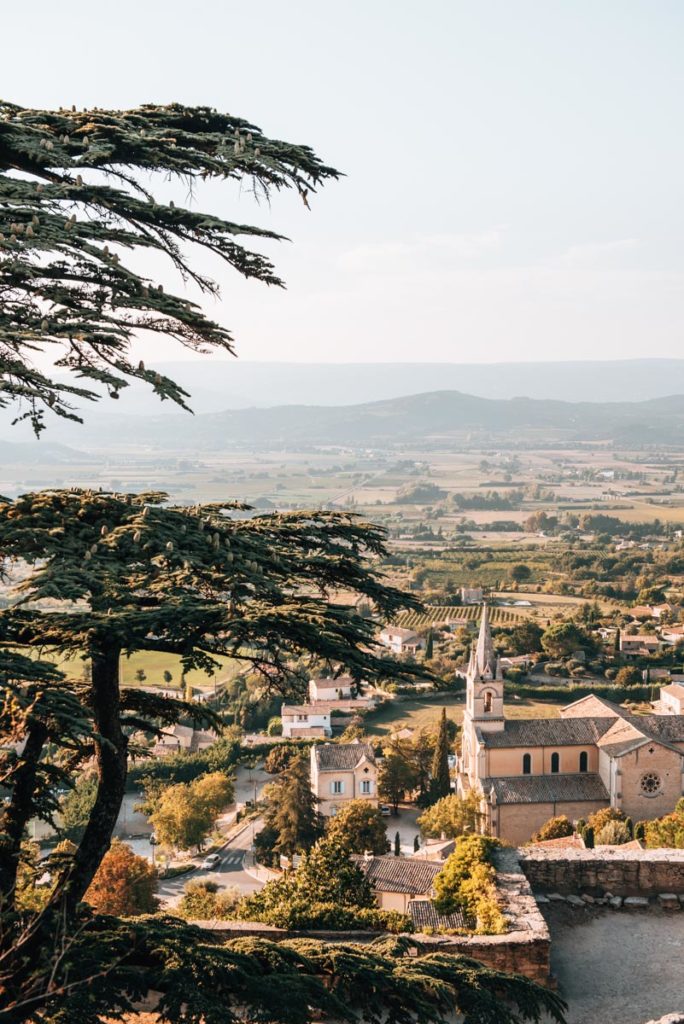
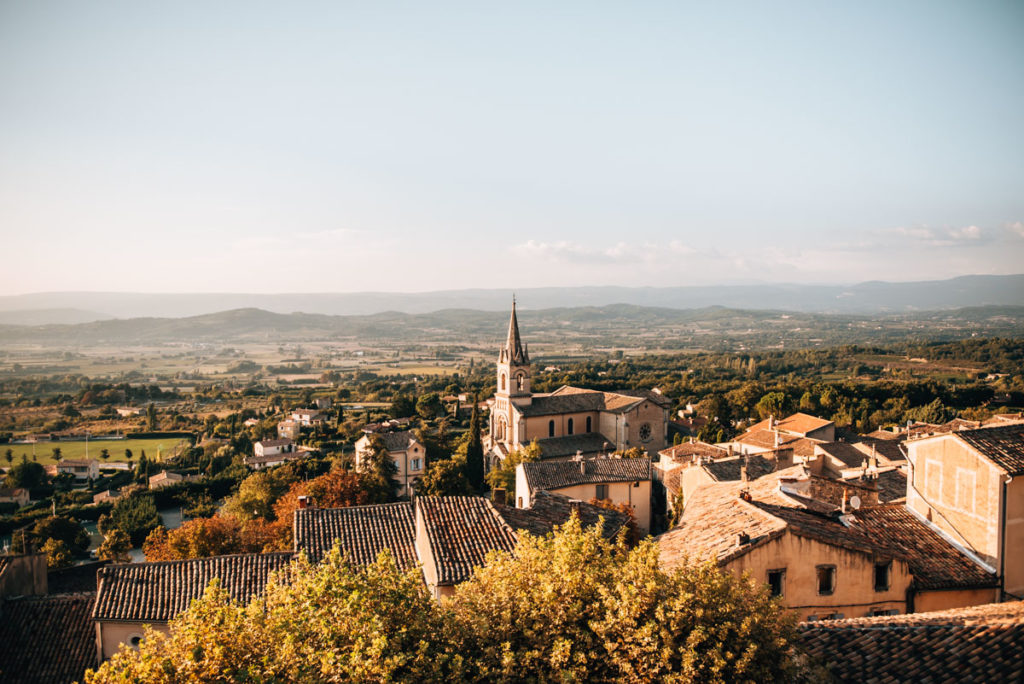

Lourmarin
For this particular section of the road trip, we have one more highlight to share with you from the Vaucluse Département: The silhouette of Lourmarin in the evening light is too good to be true.
The village centre with its pretty streets is very well maintained, but also very touristy, as one would expected. In front of the main attraction, the Château de Lourmarin, gather numerous tour groups. This can hardly be blamed as this is one of the most beautiful villages in France.
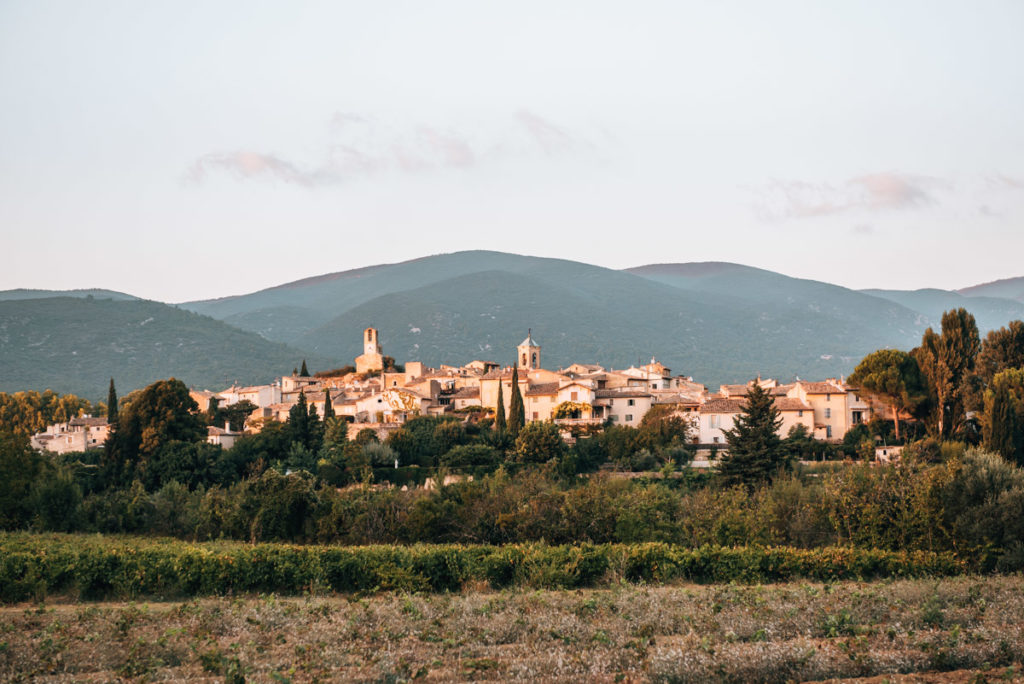
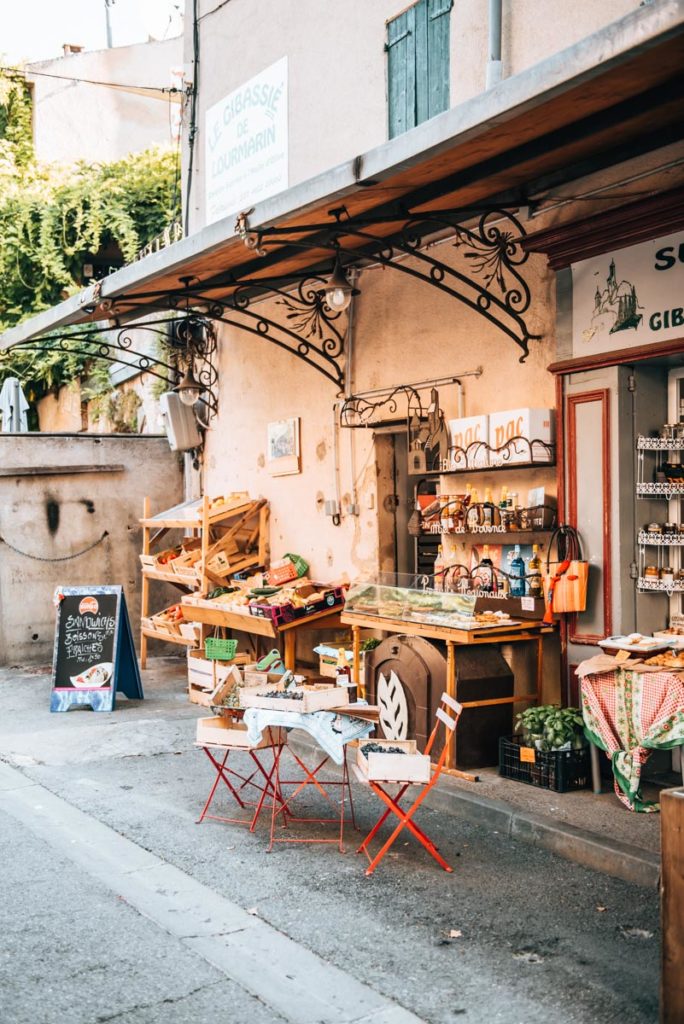
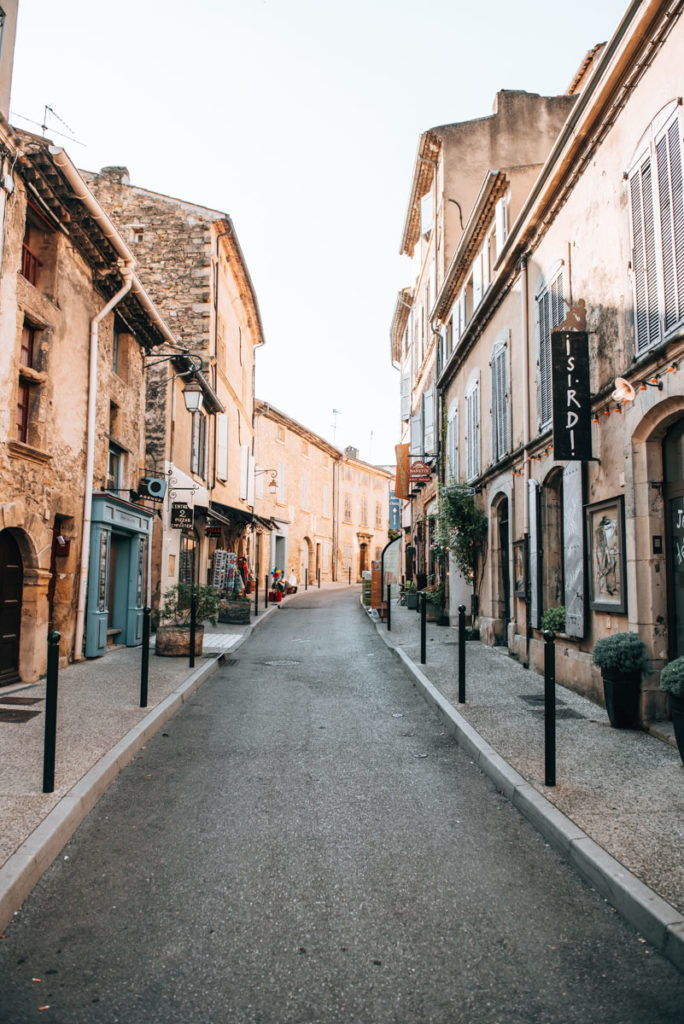
Our accommodation tip for Lourmarin: Mas la Cheneraie
We can warmly recommend an overnight stop in Lourmarin. Our tip: The pretty accommodation called Mas la Cheneraie. You spend the night here just outside the town center in a quiet location. In 10 minutes you can reach Lourmarin by foot.
The Bed & Breakfast is personally managed and beautifully decorated. From the pretty, comfortably furnished rooms to the lovely breakfast and the pool, no wish remains unfulfilled. Our conclusion: A great place to stay with fantastic value for money.
You can book the hotel here: Mas la Cheneraie
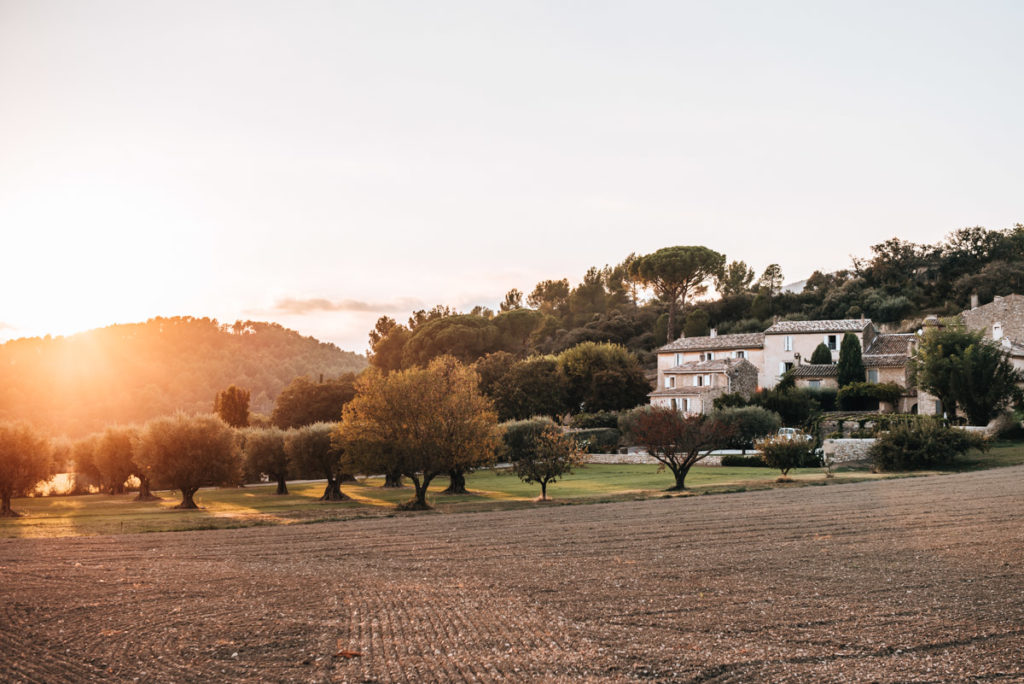
3. More Travel Tips for Provence
When is the Lavender Season in Provence?
Hardly anything symbolises Provence more than the blossoming lavender fields. A sea of purple flowers is the image that makes this region world famous and the reason why so many flock here to see the spectacle. But when does the lavender bloom? First of all, it is interesting to know that there are different varieties of lavender: there is the real lavender on the one hand and the industrially used lavandin on the other.
The lavender flowers between early/mid-June and early/mid-August, although the exact time is always weather-dependent: the sooner it gets warm in the spring, the sooner the lavender will start to bloom. The classic lavender photo motif is usually the cheaper lavandin. It grows more evenly and starts to flower a little later than the real lavender. The real lavender is much rarer and grows more in mountainous areas (from about 600 meters altitude).
If you want to be sure to experience the lavender season, then you should plan your trip for July. (We will come to the disadvantages soon.) But of course you can still be lucky in mid-August. However, we can definitively confirm that in the middle of September (during our road trip) there was no sign of lavender in the Provence region at all, as it had already been harvested.
When is the best time to travel?
The lavender season has a crucial disadvantage: It falls into the peak travel period and between July and August there is a lot of activity and tourists all around the Provence region. So if you want to see the lavender, you’ll simply have to grin and bear it.
We ourselves visited the South of France during the 2nd and 3rd week of September and even then, there was a lot going on (although not as much as in peak summer). However, you see only harvested lavender fields in September, which – admittedly – is a bit of a pity. Apart from that, we can highly recommend September as the month to travel as it is usually pleasantly warm and you can still take a dip in the sea.
Another popular travel season is spring, especially April and May, when plants in Provence begin to bloom. Just like in autumn, you have the advantage in spring that many hotels offer cheaper the prices than in summer – except during the Easter holidays.
How much time should I plan for Provence?
The itinerary through the villages of Provence, which we described, can easily be covered in just three days (and two nights). Of course, more time is always better, without a question. That way, you can spend more time in each of the individual villages.
It is important to know that the Provence, of course, includes many other areas: Before our tour through the typical Provencal villages, we spent two nights in the Gard, more precisely at the Pont du Gard and in the Camargue. This region is also part of Provence, although it looks completely different than one would expect in terms of landscape.
From Lourmarin we finally travelled on to Aix-en-Provence (for one night) and Roquebrune-sur-Argens (for two nights). Unfortunately we missed the very famous and also very spectacular Verdon Gorge as well as Avignon. In short, you should take at least a week minimum in order to really explore and discover what Provence has to offer.
4. Map: Overview of our Provence Road Trip
Disclaimer: Advertisement & Affiliate Links
For this blog article we collaborated with the French National Tourist Board (Atout France). As part of the nature campaign #gesichterfrankreichs we had the privilege to travel for two weeks through the South of France – including in the Département Vaucluse. Of course, this cooperation does not influence our opinion in any way.
This blog article contains our personal recommendations in the form of so-called affiliate links. If you book or buy something through the links, we will receive a small commission. For you, this does not change the price at all. A million thanks from the both of us!
Have you ever done a road trip through Provence? What was your itinerary like? If you have any more tips or questions, please leave us a comment!
